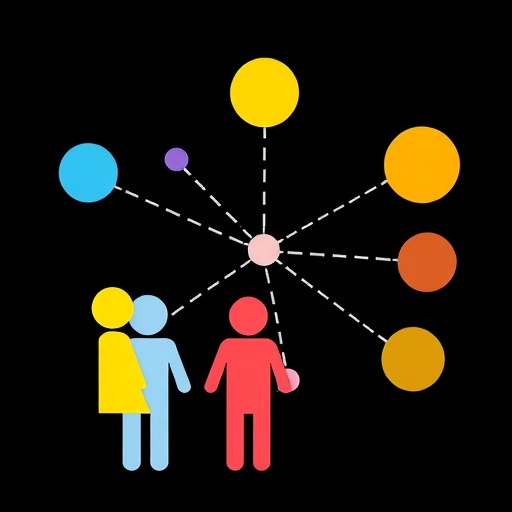In recent years, the discourse around autism and its intersection with societal perceptions has gained critical attention. The nuances of these experiences, particularly for autistic youth, have been examined through various lenses. Recent research led by Menezes and colleagues delves into the intricate relationships between demographic and clinical characteristics of autistic youth alongside their experiences of discrimination. This multifaceted study, published in the Journal of Autism and Developmental Disorders, addresses an urgent need for an understanding of how various factors contribute to the lived realities of these individuals.
Discrimination against autistic individuals has often been overlooked in broader discussions surrounding autism spectrum disorder (ASD). Many individuals with autism face not just social challenges but systemic biases that further complicate their everyday experiences. The context in which autistic youth navigate their environments, including schools, workplaces, and social circles, plays a significant role in shaping their identities and well-being. The study conducted by Menezes et al. attempts to uncover these often hidden dynamics.
One notable aspect of the research is the emphasis on the demographic characteristics of autistic youth—age, gender, ethnicity, and socio-economic background all come into play. Each of these elements can influence how discrimination is experienced and manifested. For instance, gender differences have been documented in the experience of bullying, with girls often facing more relational aggression compared to their male counterparts. The research findings highlight the need for tailored interventions that consider these demographic variables.
Furthermore, the study draws attention to the clinical characteristics of autism, including co-occurring conditions such as anxiety, depression, or sensory processing issues. These factors not only affect the internal experiences of autistic individuals but also their interactions with the outside world. The presence of additional clinical complexities may exacerbate feelings of exclusion and discrimination, prompting a call for mental health support that is both accessible and meaningful to this demographic.
Beyond individual characteristics, the study contextualizes discrimination within broader socio-cultural frameworks. The impact of societal attitudes towards autism cannot be overstated—it plays a critical role in shaping the perception of autistic individuals and their capacity to engage fully in society. Research suggests that positive representation and awareness can mitigate discriminatory behaviors, signaling a potential pathway towards fostering a more inclusive environment for autistic youth.
The methodology employed in the study is remarkable for its depth and rigour. By utilizing quantitative analyses alongside qualitative interviews, the authors are able to paint a comprehensive picture of the experiences of autistic youth concerning discrimination. Such an approach enables the researchers not only to capture the frequency and nature of encountered discrimination but also to explore the emotional and psychological ramifications experienced by the individuals involved. This dual approach enhances the validity of the findings while offering a richer narrative around these pressing concerns.
The implications of the research findings are profound. By systematically examining the interplay between demographic factors and experiences of discrimination, the authors highlight the necessity for policy changes within educational and clinical settings. Schools need training programs that educate both staff and students about autism spectrum disorder to promote awareness and sensitivity, ultimately reducing instances of bullying and discrimination.
Ultimately, this research underscores the importance of listening to the voices of autistic youth themselves. Their narratives are essential to informing effective practices and policies. Engaging with these young individuals in discourse about their experiences empowers them and fosters resilience. Listening to their stories allows educators, practitioners, and peers to develop a deeper understanding of the challenges faced and, consequently, the support that is most needed.
Moreover, the study illustrates the critical role of community and parental involvement in addressing discrimination. When families and communities work collaboratively, they can create supportive networks that uplift autistic individuals. Engaging local organizations and advocacy groups can bolster these networks, ensuring that autistic youth do not navigate their challenges in isolation but rather as part of a compassionate community.
In conclusion, the work of Menezes et al. opens up vital conversations regarding discrimination against autistic youth and emphasizes the importance of a multi-dimensional approach in addressing these issues. The study serves as a call to action for awareness, support, and legislative advocacy. Creating a society where autistic individuals can thrive requires collective effort, understanding, and a commitment to change.
As we continue to advance our understanding of autism, it is essential to prioritize the experiences of autistic youth and ensure their voices are central to ongoing discussions. The road ahead is long, but the insights garnered from this research provide a foundational understanding from which meaningful progress can be made.
Subject of Research: Discrimination Experiences of Autistic Youth
Article Title: Associations Among Demographic and Clinical Characteristics and Discrimination Experiences of Autistic Youth
Article References:
Menezes, M., Linde, J., Howard, M. et al. Associations Among Demographic and Clinical Characteristics and Discrimination Experiences of Autistic Youth.
J Autism Dev Disord (2025). https://doi.org/10.1007/s10803-025-07019-z
Image Credits: AI Generated
DOI: 10.1007/s10803-025-07019-z
Keywords: Discrimination, Autistic Youth, Socio-cultural Framework, Demographic Characteristics, Clinical Characteristics, Mental Health, Awareness, Advocacy, Inclusion, Community Support.




